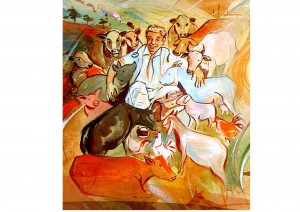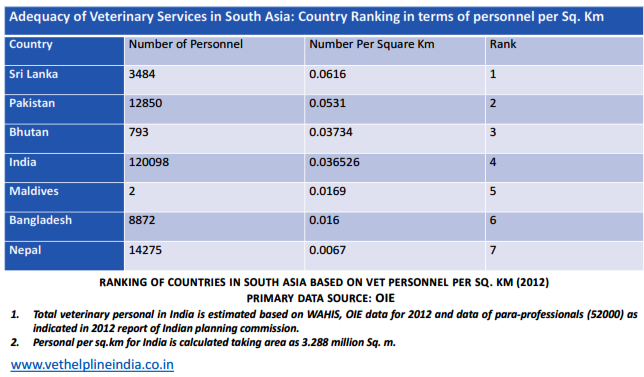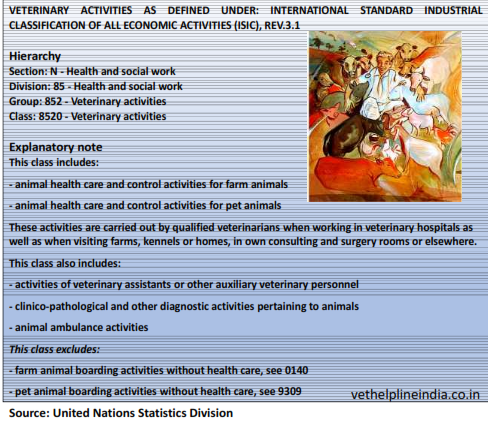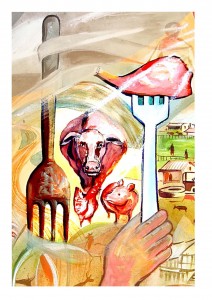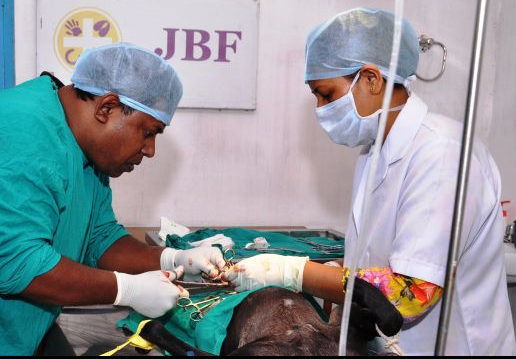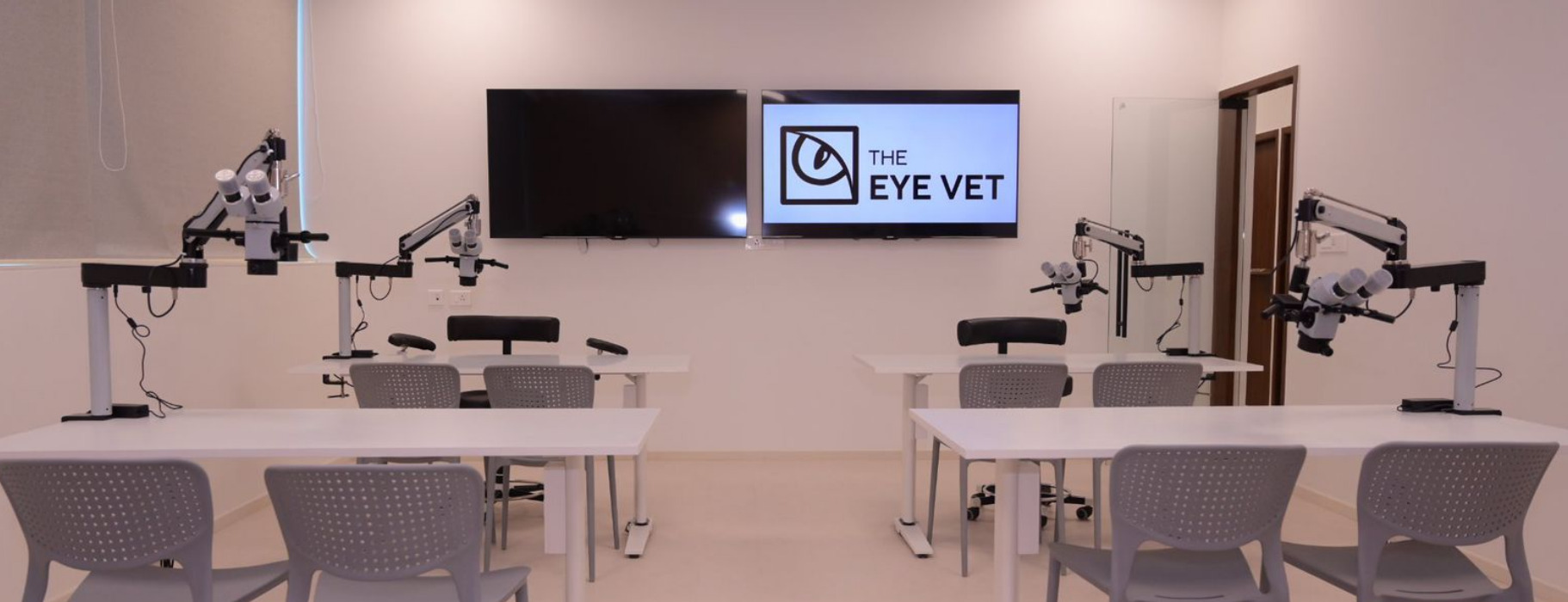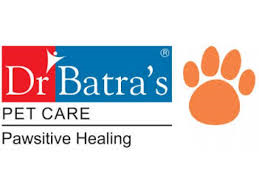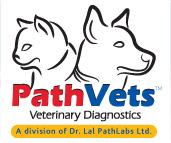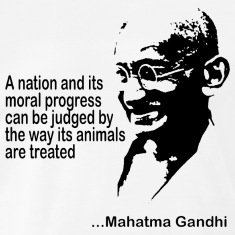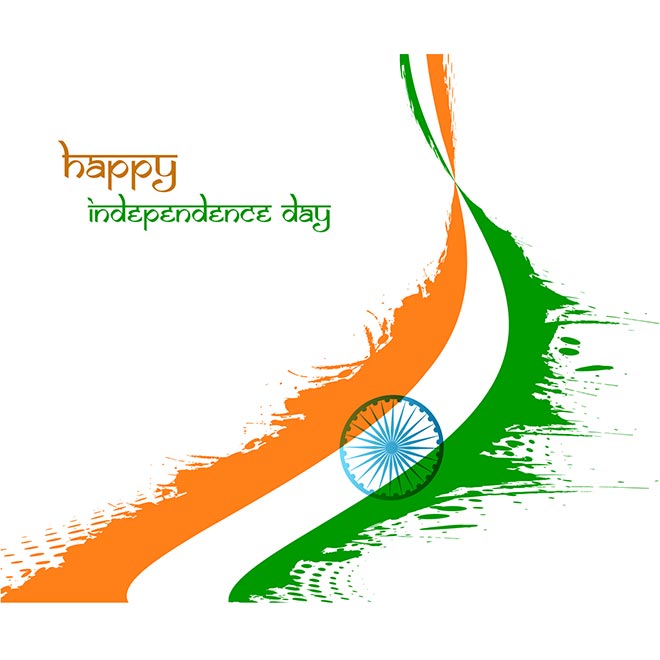Dr Miftahul Islam Barbaruah
Director, Vet Helpline India Pvt Ltd.
I had a recent opportunity to prepare a report on the global veterinary workforce. Some very interesting statistics attracted my attention. In 2015, the USA reported to World Organization for Animal Health (WOAH, founded as OIE) a total of 87009 veterinarians, out of which 75593 (86.9%) are private veterinarians. In contrast, during the same year, India reported 70767 veterinarians, of which only 3116 (4.4%) were private veterinarians. In the above comparison, I have not considered private veterinarians in the US pharmaceutical industry as India is yet to report veterinarians in the private pharmaceutical industry. While presenting the above comparative statistics, I have considered veterinarians in academics and training institutions which are 6800 and 2181 for USA and India, respectively, as public veterinarians.
As per the Federation of Veterinarians in Europe (FVE) Survey of Veterinary Profession in Europe-2015, there are 243 000 veterinarians in Europe. A clear majority (60%) of these veterinarians work in private clinical practice, predominantly the companion animal.
Why do the majority of veterinarians in developed countries operate as private veterinarians? Is it because animal owners in these countries can pay for services? The economic and institutional framework of the livestock industry is quite different in several respects in developed and developing countries, but things are fast changing in developing countries like India. A clear majority of Indians are now looking for quality services and are ready to pay for them.
In India, though veterinary service is predominantly public and free, the availability and access in most rural areas are poor. In many areas, farmers, in an actual sense, are paying for what is termed as free or subsidized service. Moreover, public veterinary services to farm animals due, for many reasons, are largely inadequate and discontinuous, with limited focus on the prevention of diseases at the level of individual farms or households. The situation is similar in all our six neighboring South Asian countries. This is primarily due to an inadequate number of veterinary doctors and para-vets.
To tackle the shortage of veterinarians in service delivery, there are two natural solutions: Increased recruitment of veterinarians in public service and incentive/encouragement for private veterinary service delivery. However, one should simultaneously increase the capacity intake of existing veterinary colleges or set up new public or private colleges to meet the demand of veterinarians. Public finance constraints limit the scope for the first solution for the government. Therefore we are witnessing better credit facilities with subsidies for private veterinarians to set up clinics (Please refer Agri-clinic scheme of the Government of India).
Let’s consider the opinion of an economist, except for preventive care. Curative veterinary service is a private good, and there is limited justification for scarce public resources for the same.
As per the International Standard Industrial Classification of All Economic Activities, Rev.3.1, Veterinary activities are classified under class 8520 as economic activities.
In many developing countries in recent years, the economy’s improvement has given people more disposable income to spend on quality private veterinary services. Research has already indicated that the majority of animal owners in developing countries (including rural farmers) have the willingness to pay for veterinary services, and it is possible to increase the capacity of farmers to pay for such services through service-level innovations such as the formation of common interest group of farmers who in turn are linked to private veterinarians on annual retention contract basis. Veterinarians under such contracts can further reduce the cost of services to farmers by following the principles of herd health management. A private veterinarian under innovative service arrangements can also supervise and hire trained para-vets and village-level animal health workers to efficiently manage a large client base. National Skill Development Corporation (NSDC) has recently adopted the National Occupational Standard (NOS) for para-vets and animal health workers to streamline para-vet training and skill development and to bring their services under an appropriate monitoring framework in India. Private veterinarians can now legally hire para-vets to ensure continuity of treatment and follow-up service to many clients. The following public policy in future can further enhance the scope of private veterinary services in India:
- Sub-contracting of select services to the private sector.
- Support for membership-based organizations for service infrastructure development and delivery.
- Direct subsidies to poor livestock farmers (e.g., vouchers, etc.) to avail services from accredited private veterinarians.
- Support to monitoring framework for private para-vets and animal health workers under the supervision of registered veterinarians.
In recent years, many cases of emerging diseases and food safety issues are forcing the government to enhance resource allocation to strengthen public agencies’ preventive and regulatory capacity. The public resources are getting scarce for curative individual client-oriented services in this context. Many policy initiators in India believe that public veterinary service should only focus on a country or state-level preventive health management and regulatory functions related to public health and food safety. Public-funded curative services should be targeted at poor and under-developed areas only. People in developed areas engaged in profitable farming can pay for curative veterinary services from private concerns. There is ample economic justification for the withdrawal or pricing of public curative services in developed areas. This will enhance the scope or give a competitive edge to private veterinary service providers competing with free public veterinary services.
In India, we are going through a development phase, and soon we will have more people in private services than in public services like that in developed nations such as the USA and European countries. The paradigm shift in policy is evident as many states in India have already started pricing curative public veterinary services. Few states are also evaluating the option of direct transfer of veterinary care costs to poor or BPL farmers. Though the benefit of the policy shift can be debated, this appears non-reversible and is creating a vast opportunity for private veterinarians to fill the gap in service delivery, at least in developed clusters.
Another area that has created much scope for private veterinarians with management, laboratory services, and public health specialization is the increasing trend of government outsourcing public services.
The services of veterinarians are in demand from many private companies, agencies, and cooperatives that are active across the livestock value chain, starting from the cultivation of feed and fodder to the consumption of processed and further processed animal-based food items. Demand also exists from companies who support livestock value chains from outside, such as private research establishments (Both action and pure research such as policy research, project monitoring, product development, clinical trials, etc.), knowledge product providers, and manufacturers (e.g., Print and web publications, training and capacity building services, mobile applications, etc.), pharmaceuticals, feed and equipment manufacturers, breeding service providers, insurance agencies, banks, etc.
The demand for veterinarians from Non-government agencies is also increasing in recent years as veterinarians are found to be good animal welfare and development workers, and their technical knowledge is an added advantage for NGOs to implement animal welfare and livestock-related development intervention.
On the demand side, the technology-driven organized and developed production clusters of small to medium farms and integrated operation of companies (including contract farming) in recent years has resulted in vast demand for high-end skilled farm animal veterinary consultants. Data-aided herd health management, Internet of Things (IoT) based tools, etc., is slowly taking center stage in India’s veterinary farm and companion animal consultancy. Many farm animals and farm premises are now being identified using Information Technology-based tools for real-time data recording, cloud base software-aided analysis of health/production data, and delivery of a targeted and planned basket of private veterinary services.
Private turnkey consultancy service providers for setting up organized livestock farms are fast emerging in India. Many private companies are also engaging veterinarians to develop production clusters for integrators.
Referring to the companion animal sector, India’s pet population grew from 7 million in 2006 to 10 million in 2011. On average, 600,000 pets are adopted every year. With increasing dog ownership in India, ‘Euro monitor International’ has projected India to be the fastest growing global pet market. The rising pet ownership rates are driving demand for pet food, health products, and pet accessories besides veterinary services. The Indian pet market is now an $800-million-plus industry and is expected to register strong double-digit retail value growth in the coming years. As per a recently published report by TechSci Research, “India Pet Food Market Forecast and Opportunities, 2019”, the pet food market in India is projected to cross USD270 million by 2019.
A chain of advanced, including super specialty private veterinary clinics, has emerged in India in response to the favorable market. Like the human health sector, animal health care is all set to see a trend of corporatization, engagement of foreign expertise, and investment.
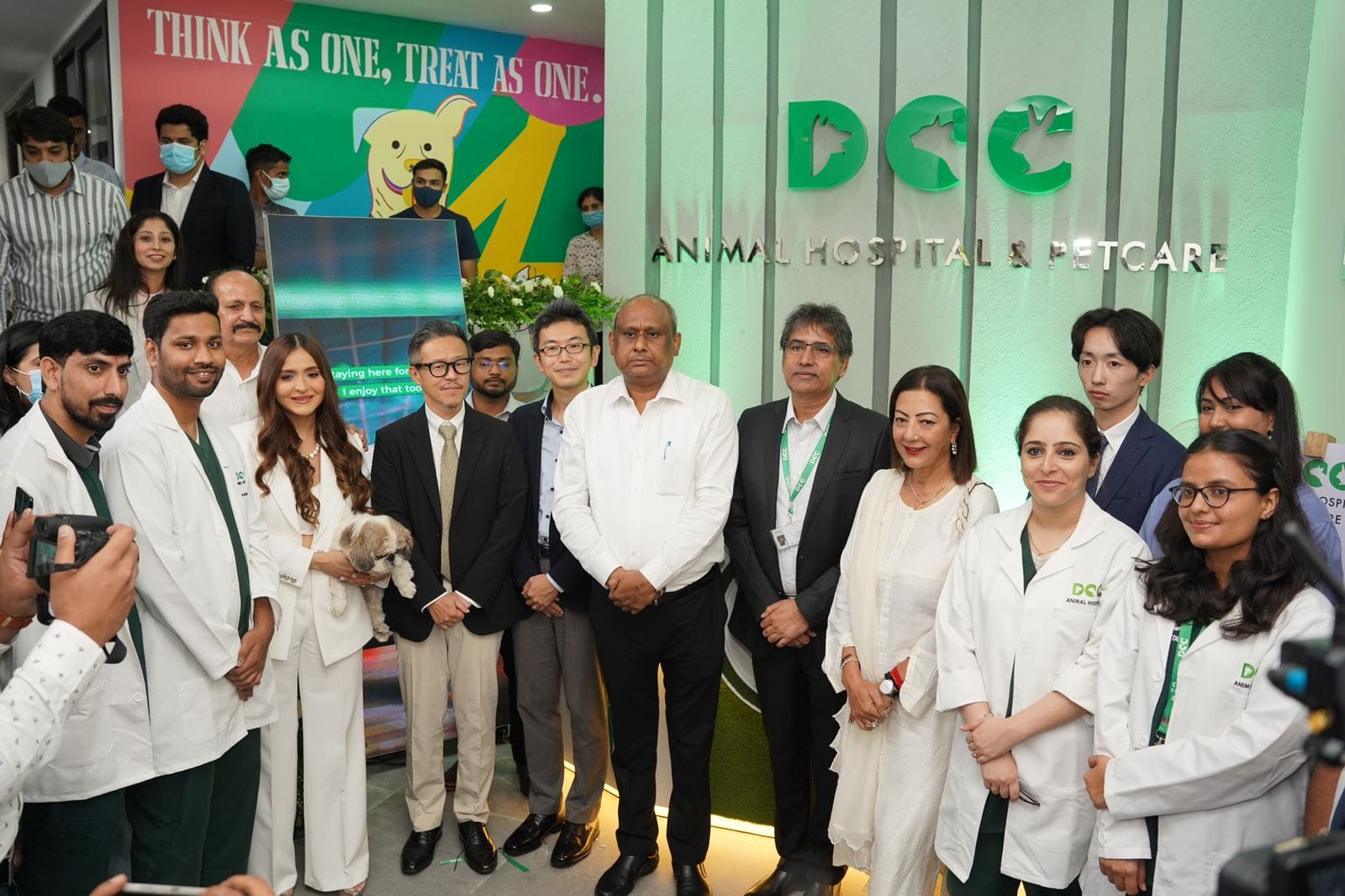
President of Veterinary Council of India inaugurates high-end pet care facility at New Delhi growing with foreign collaboration. ( Source: FB Post & https://dccpets.in/ )
Large corporate houses like Dr. Batra’s and Dr. Lal Path labs are a few examples of this trend. Many clinics, including mobile service facilities for large animals, are planning to scale up operations through franchisee networks. A very encouraging development is entrepreneurial investments in independent advanced laboratories both for companion and farm animals.
The discussion in this article indicates the vast scope for private veterinarians in India. However, private veterinarians must improve their skills in chosen areas to tap this opportunity. They must ensure 5 A’s of service delivery viz. Acceptability, Availability, Access, Adequacy, and Affordability. Exploring the vast online resource under Continuing Veterinary Medical Education (CVME) framework is the need of the hour for students and field veterinarians willing to enter the world of private services.
Veterinary Council of India is also set to establish the standards of veterinary practice in the coming years, making CVME credit score mandatory for the renewal of registration of veterinarians.
As the scope and demand for veterinarians in the private sector increases in India, much is expected from veterinary colleges and training institutes as a provider of infrastructure for appropriate skill training of students and mid-career practicing veterinarians.
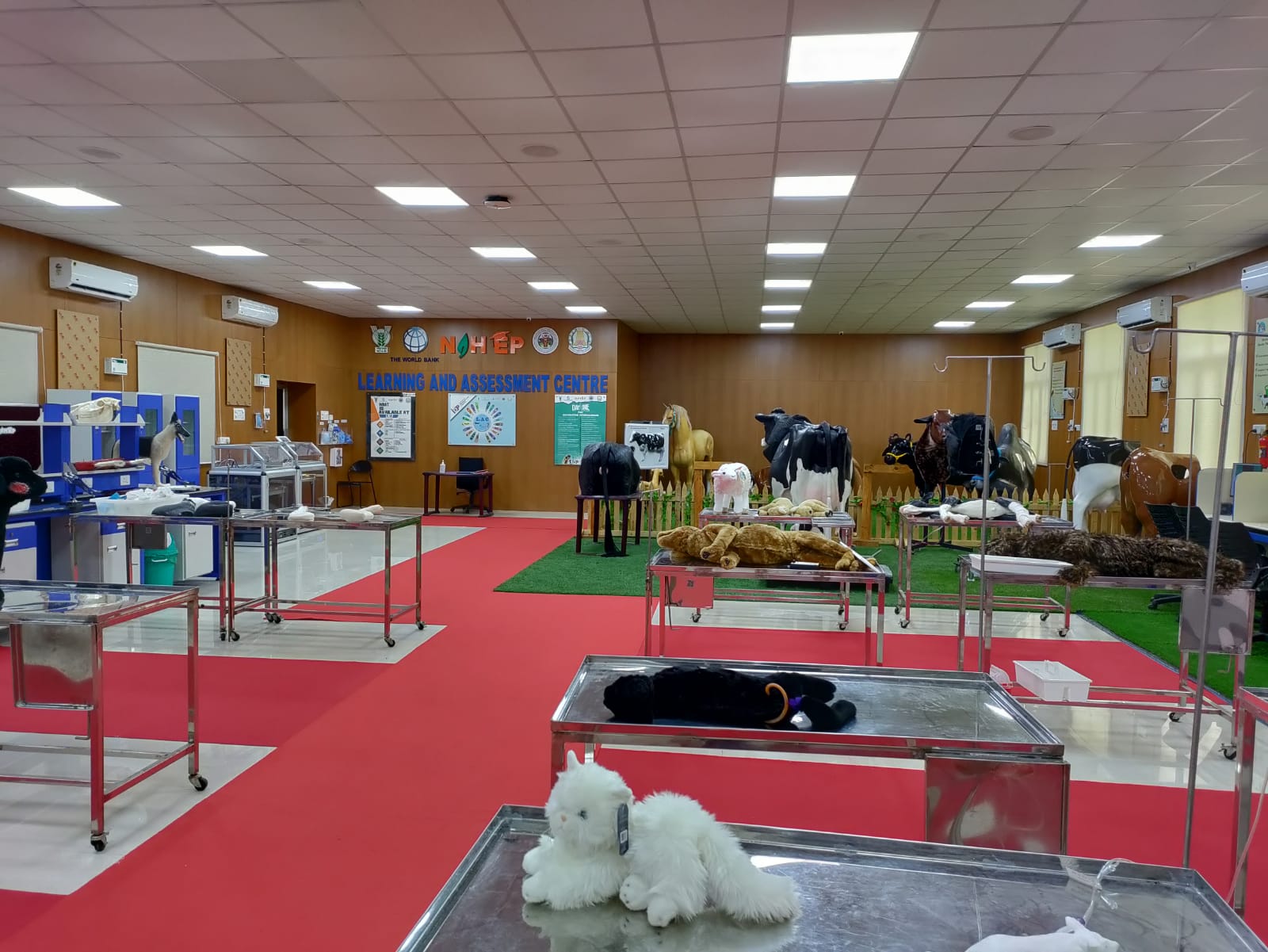
State of Art learning and assessment center at Madras Veterinary College to impart clinical skills to students.
Click Here for the YouTube link about the center facility.
The Government of India has recently (2016) decided to remove the “controlled condition” for 100 percent Foreign Direct Investment (FDI) in the animal husbandry sector. The opportunity in the private sphere, if not tapped by Indian veterinarians now – the days are not too far when we will witness enterprises in India owned and managed by foreign veterinarians.
(An abridged version of the article was published in Souvenir of Veterinary College, Alumni Meet-2017, Veterinary College Alumni Association, Assam)
Veterinarians and veterinary service-related private organizations/ associations in India not mentioned in this article can send us their organizational details, website address, and logo at info@vethelplineindia.co.in
Please post additional information for the benefit of readers:

